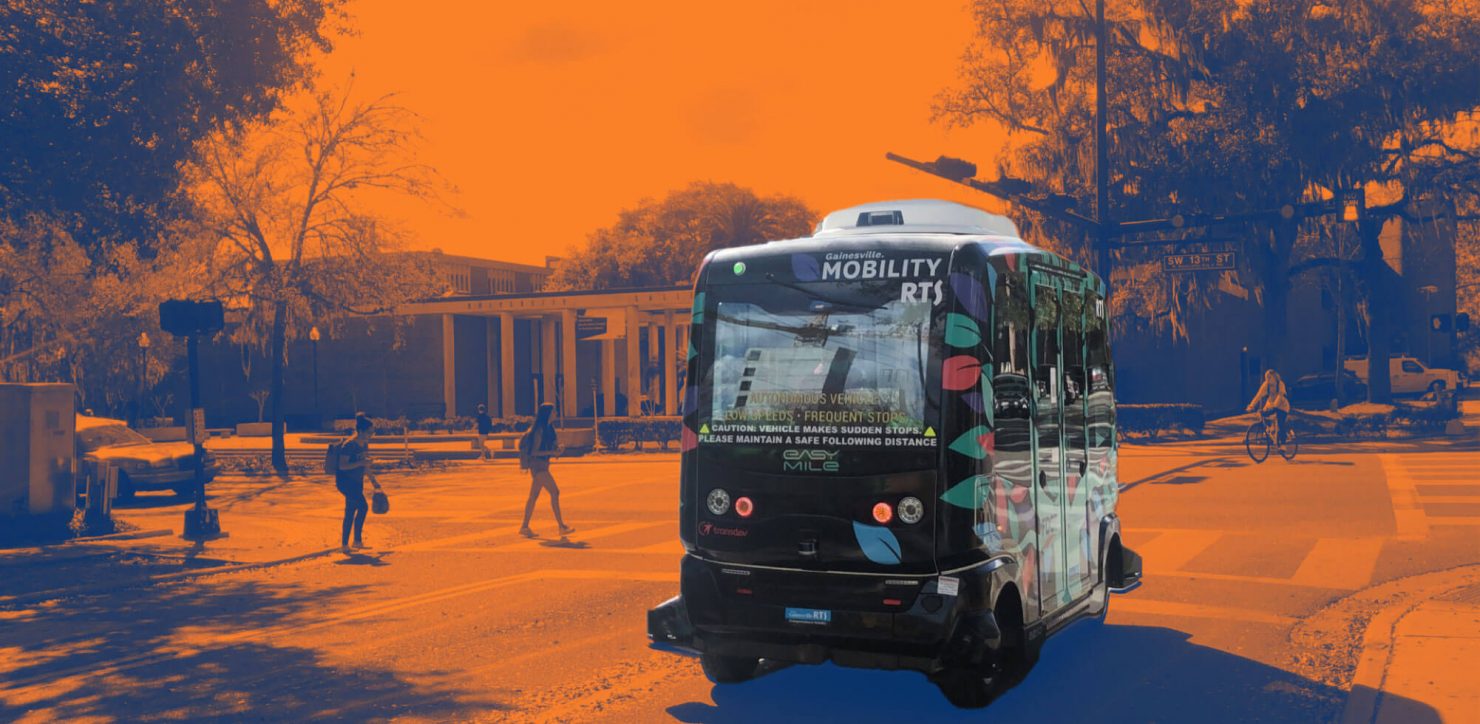This story was originally posted on the UF Transportation Institute website.
On any given day, Gainesville’s Autonomous Shuttle (AV) can be seen driving around city streets, interacting with pedestrians, bicyclists, and conventional vehicles, while picking up and dropping off riders along its route.
AV shuttle corridors across the country are mostly designed without traffic lights, or the shuttles are maneuvered through traffic lights manually by an attendant. However, the Gainesville AV is different.
The shuttle can now communicate with traffic signals and make right or left turns without the assistance of a human operator. This advancement in autonomous shuttle technology is the result of research funded by the Florida Department of Transportation and the University of Florida (UF) Office of Research, in collaboration with Yunex Siemens, who supplied the roadside units (RSUs) and Transdev, the EasyMile shuttle operator.
In addition to the RSU and OBU connectivity projects, and as part of Phase 2 operations, Gainesville’s Regional Transit System (RTS) and Transdev have extended the route near UF’s campus.
The shuttle can communicate with traffic lights thanks to the implementation of an onboard unit (OBU), a communication device that receives transmissions from RSUs. The RSU is mounted on the mast arm pole, which is the vertical component that holds the traffic lights.
“In Gainesville, because the RSU can talk to the OBU, the shuttle can make decisions on whether to stop, go or make a right or left turn on its own,” said Pruthvi Manjunatha, Ph.D., research assistant professor, and manager of the I-STREET Living Lab. “The shuttle knows whether it’s red or green because it is getting the signal from the RSU and can make decisions, operating autonomously.”
The I-STREET Living Lab includes a network of roads containing advanced infrastructure on which the shuttle operates, and where other technologies such as connected and autonomous vehicles, smart devices, and sensors are tested. The Living Lab is also where new applications related to safety and mobility are created.
Other studies led by Dr. Manjunatha focus on the public’s readiness and comfort level and willingness to interact with AVs. The studies have shown generally positive responses from the public, with a need to improve the speed of the shuttle.
“By identifying the barriers and facilitators of AV use, we will expedite the deployment of the technology from both a policy and practice perspective,” Dr. Manjunatha said. “We expect this will reduce transportation operating costs, attenuate the environmental impacts of transportation, improve the community’s social justice quotient, and save pedestrian, bicyclist, and vehicular lives.”


